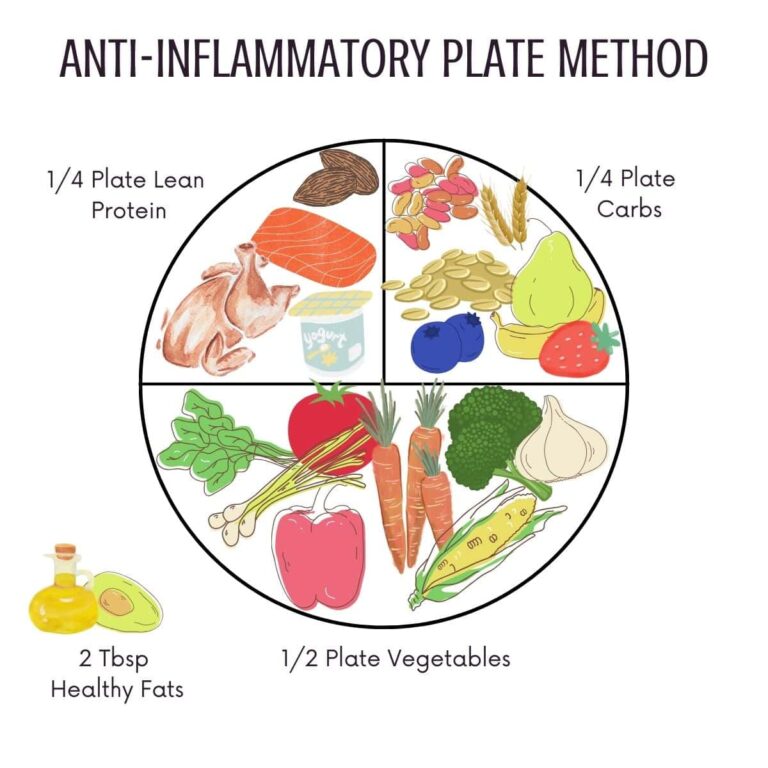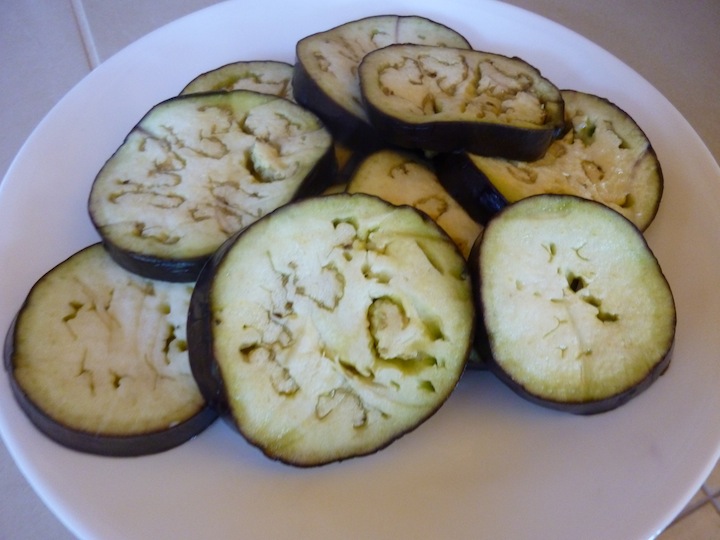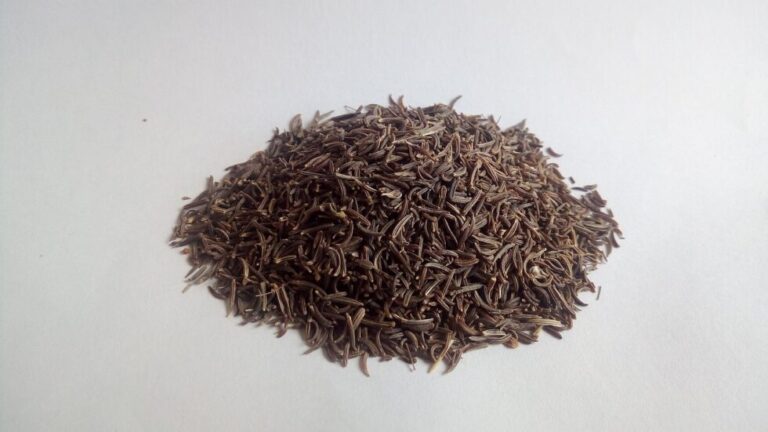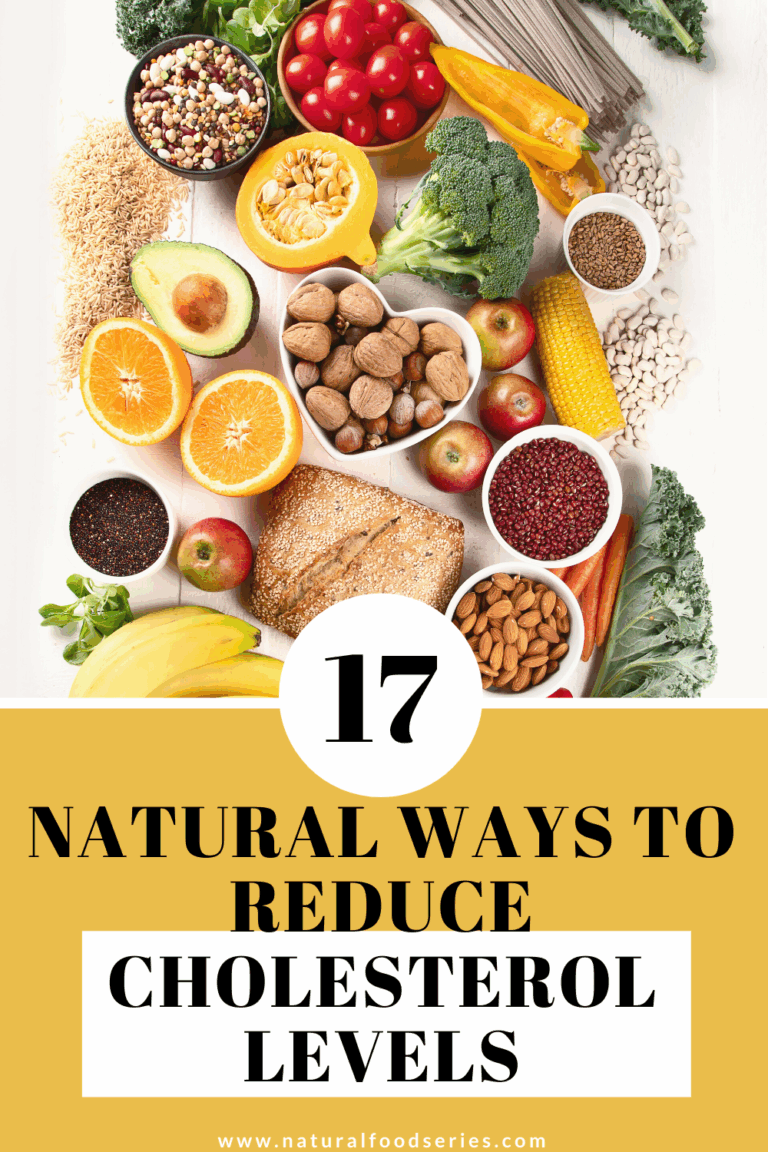The Ancient Elixir, Modern Wisdom: Mastering Apple Cider Vinegar for Health Without the Harm
In the vast tapestry of human wellness, few remedies have traversed time with such enduring fascination as Apple Cider Vinegar (ACV). From ancient healing texts to the vibrant chatter of modern health forums, ACV has emerged as a quintessential "superfood," lauded for a dizzying array of potential benefits. Its journey from a humble kitchen staple to a celebrated health elixir is a testament to its intriguing properties, yet like all potent tools, its power lies not just in its existence, but in its judicious and informed application.
For the knowledgeable seeker of wellness, the allure of ACV is undeniable. Promises of improved digestion, stabilized blood sugar, enhanced weight management, and even glowing skin paint a compelling picture. However, beneath the surface of these captivating claims lies a crucial caveat: ACV is a potent acid, and its misuse can lead to significant and uncomfortable side effects. This article is your comprehensive guide, a narrative woven through history, science, and practical wisdom, designed to empower you to unlock the true potential of Apple Cider Vinegar – safely, effectively, and without succumbing to the pitfalls of uninformed enthusiasm.
A Timeless Tonic: The Enduring Story of Apple Cider Vinegar
The story of ACV is as old as civilization itself, a testament to humanity’s innate drive to harness nature’s bounty for health and sustenance. Its origins trace back thousands of years, with evidence of vinegar production found in ancient Babylonian texts from 5000 BC. The Egyptians used it for preservation and medicinal purposes, while Hippocrates, the father of modern medicine, famously prescribed apple cider vinegar mixed with honey for a variety of ailments, including coughs and colds, in 400 BC. Roman soldiers were known to drink "posca," a mixture of vinegar, water, and herbs, for strength and to prevent illness during long campaigns.
Through the centuries, ACV remained a staple in folk medicine across diverse cultures. It was used as an antiseptic, a digestive aid, a wound cleanser, and a general tonic. Its sharp, tangy profile made it a versatile ingredient in cooking, preserving foods long before refrigeration. The transformation from apple juice to apple cider vinegar was seen almost as a magical alchemy, a process driven by unseen forces – what we now understand as microbial fermentation.
In recent decades, ACV has experienced a remarkable resurgence in popularity, propelled by a renewed interest in natural remedies and traditional wellness practices. This modern embrace, however, has also brought with it a deluge of anecdotal claims and sometimes exaggerated expectations, making it more crucial than ever to separate fact from fiction and understand the science that underpins its true potential. At the heart of this enduring tonic, and often cited as its secret weapon, is "the Mother" – a cloudy, cobweb-like substance that floats within raw, unfiltered ACV. This living culture of beneficial bacteria and yeast is not merely a visual quirk; it is the very engine of ACV’s potency, carrying the probiotic power that distinguishes truly therapeutic ACV from its pasteurized, filtered counterparts.
Deconstructing the Elixir: What Makes ACV Tick?
To truly appreciate ACV’s potential, we must delve into its fundamental composition and the remarkable process that brings it to life. It all begins with humble apples, which are crushed to extract their juice. This juice then undergoes a two-step fermentation process:
- Alcoholic Fermentation: Yeast, naturally present on the apples or added intentionally, converts the sugars in the apple juice into alcohol, producing apple cider.
- Acetic Acid Fermentation: This is where the magic truly happens. A specific group of bacteria, known as Acetobacter, then oxidizes the alcohol into acetic acid. This is the primary active compound responsible for most of ACV’s purported health benefits.
This dual fermentation process is what distinguishes apple cider vinegar from apple juice or even apple cider.
The Powerhouse Compound: Acetic Acid
Acetic acid, typically present at a concentration of 5-6% in most commercial ACV, is the star of the show. Its scientific name is ethanoic acid, and its chemical properties are responsible for ACV’s characteristic pungent smell, sour taste, and many of its physiological effects.
- Mechanism of Action: When consumed, acetic acid has been shown to:
- Inhibit carbohydrate digestion: It can slow down the activity of certain digestive enzymes, leading to a slower release of glucose into the bloodstream.
- Improve insulin sensitivity: It may enhance the body’s ability to respond to insulin, facilitating glucose uptake by cells.
- Promote satiety: Some theories suggest it may influence signals that regulate appetite.
- Exert antimicrobial effects: Its acidic nature creates an inhospitable environment for many harmful bacteria and fungi.
Beyond Acetic Acid: The Supporting Cast
While acetic acid takes center stage, raw, unfiltered ACV also contains a complex array of other compounds that contribute to its overall profile and potential benefits:
- Polyphenols: These are potent plant-based antioxidants, such as gallic acid, catechin, and caffeic acid. They help combat oxidative stress in the body, which is linked to aging and various chronic diseases.
- Vitamins and Minerals: While not a significant source of daily recommended intake, ACV contains trace amounts of B vitamins, vitamin C, potassium, magnesium, calcium, and phosphorus. These micronutrients, especially potassium, play roles in various bodily functions.
- Amino Acids: The building blocks of proteins, present in small quantities.
- Enzymes: Biologically active proteins that catalyze various biochemical reactions in the body.
The "Mother": The Heart of Raw ACV
No discussion of ACV is complete without acknowledging "the Mother." This cloudy, amorphous substance visible in raw, unfiltered, and unpasteurized ACV is a complex matrix of beneficial bacteria, yeast, and enzymes. It’s similar to the scoby (symbiotic culture of bacteria and yeast) found in kombucha.
- Significance:
- Probiotic Potential: While not a robust source of diverse probiotic strains like fermented foods such as kimchi or sauerkraut, the Mother contributes to the beneficial microbial content of ACV, potentially supporting gut health.
- Nutrient Density: Many believe that the Mother contains the bulk of ACV’s enzymes and beneficial compounds, making raw, unfiltered ACV superior to pasteurized versions where the Mother has been removed.
- Indicative of Quality: Its presence signifies that the ACV has not been overly processed or heat-treated, preserving its natural vitality.
Understanding these components allows us to appreciate ACV not as a singular magic bullet, but as a complex biological product with multifaceted potential.
The Promise of the Potion: Unpacking ACV’s Potential Health Benefits
The enthusiasm surrounding ACV stems from a growing body of research, albeit some still in its early stages, that points to several compelling health advantages. It’s crucial to approach these benefits with a discerning eye, understanding that while promising, ACV is best viewed as a supportive agent within a holistic health strategy, not a standalone cure.
Glycemic Guardian: Blood Sugar Regulation
Perhaps the most robust and scientifically supported benefit of ACV lies in its ability to influence blood sugar levels. Numerous studies have demonstrated its positive impact, particularly in individuals with insulin resistance, pre-diabetes, and type 2 diabetes.
- Mechanism: Acetic acid appears to work on several fronts:
- Delaying Gastric Emptying: It slows down the rate at which food leaves the stomach, leading to a more gradual absorption of glucose into the bloodstream and preventing sharp post-meal blood sugar spikes.
- Improving Insulin Sensitivity: It may enhance the cells’ responsiveness to insulin, allowing them to absorb glucose more efficiently from the blood.
- Inhibiting Starch Digestion: Some research suggests it can interfere with enzymes that break down starches, reducing the amount of glucose absorbed.
- Evidence: Studies have shown that consuming ACV before a high-carb meal can significantly reduce post-prandial (after-meal) blood glucose and insulin responses. For individuals with type 2 diabetes, ACV has been shown to improve fasting blood sugar levels and insulin sensitivity.
- Best Practices for This Benefit: To leverage ACV for blood sugar control, consume it diluted with water (1-2 tablespoons) immediately before or with a meal, particularly one rich in carbohydrates.
Weight Management Ally: Aiding in Satiety and Metabolism
While ACV is not a magic weight loss potion, it can play a supportive role in a comprehensive weight management plan.
- Mechanism:
- Increased Satiety: Several studies indicate that ACV can increase feelings of fullness, potentially leading to reduced calorie intake. This effect is thought to be partly due to the delayed gastric emptying, keeping food in the stomach longer.
- Modest Metabolic Boost: Some animal studies suggest ACV may activate certain genes involved in fat metabolism and reduce fat accumulation, though human evidence is less conclusive and requires further research.
- Role in Holistic Strategy: ACV’s contribution to weight management is likely modest and works best when combined with a balanced diet, regular exercise, and adequate sleep. It can be a useful tool to curb appetite and potentially assist in metabolic processes.
Digestive Harmony: From Gut Health to Heartburn Relief (with caveats)
ACV’s impact on digestion is multifaceted and, in some cases, paradoxical.
- Prebiotic Potential: The "Mother" and other compounds in raw ACV may act as prebiotics, nourishing beneficial gut bacteria and supporting a healthy gut microbiome. A balanced gut is crucial for overall health, including immune function and nutrient absorption.
- Heartburn Relief (The Paradox): Counter-intuitively, some individuals find relief from acid reflux (heartburn) by consuming diluted ACV. The theory is that heartburn can sometimes be caused by too little stomach acid, leading to improper digestion and gas buildup that pushes stomach contents back up. ACV, being acidic, might help increase stomach acidity to optimal levels, aiding proper digestion. However, for those with existing ulcers or severe GERD, ACV can exacerbate symptoms, so caution is paramount.
- Antimicrobial Effects: Its acidic nature can inhibit the growth of certain harmful bacteria, such as E. coli and Salmonella, making it a traditional remedy for digestive upsets and food poisoning (though not a substitute for medical treatment).
Cardiovascular Compass: Cholesterol and Blood Pressure
Emerging research suggests ACV may offer benefits for heart health, though most of the strong evidence comes from animal studies.
- Cholesterol: Animal studies have shown that ACV can lower total cholesterol, triglyceride levels, and LDL ("bad") cholesterol, while increasing HDL ("good") cholesterol. The antioxidant properties of polyphenols in ACV may also protect LDL particles from oxidation, a key step in the development of atherosclerosis.
- Blood Pressure: Some research indicates ACV may help lower blood pressure by influencing the renin-angiotensin system, a key regulator of blood pressure.
- Human Data: While promising, human studies on ACV’s impact on cholesterol and blood pressure are fewer and less conclusive. It should not be considered a primary treatment for cardiovascular conditions but rather a potential adjunct.
The Immune System’s Subtle Support
While not a direct immune booster like Vitamin C, ACV contributes to immune health through indirect pathways. Its antimicrobial properties help keep harmful pathogens in check, particularly in the gut. A healthy gut microbiome, fostered by compounds like those in ACV, is intrinsically linked to a robust immune system.
Skin Deep & Beyond: Topical and Systemic Effects
ACV has long been used topically for various skin conditions, and its internal consumption may also indirectly support skin health.
- Topical Uses: Diluted ACV can help balance skin pH, act as an astringent, and its antimicrobial properties may combat acne-causing bacteria. It’s often used in diluted forms as a toner or for spot treatments.
- Internal Link: By promoting a healthy gut and reducing inflammation, ACV may indirectly contribute to clearer, healthier skin.
Antioxidant Arsenal
The polyphenols present in ACV are powerful antioxidants that scavenge free radicals, unstable molecules that can damage cells and contribute to chronic diseases and aging. By reducing oxidative stress, ACV contributes to overall cellular health and disease prevention.
It’s clear that ACV possesses a fascinating spectrum of potential benefits. However, as with any potent natural remedy, its advantages are inextricably linked to the wisdom of its application. Ignoring the potential downsides is not only imprudent but can lead to adverse health outcomes.
The Shadow Side: Navigating ACV’s Potential Risks and Side Effects
While ACV boasts an impressive list of potential benefits, its highly acidic nature (with a pH typically between 2.5 and 3.0) means it can be corrosive if not handled and consumed properly. Understanding these risks is paramount to safe enjoyment of this ancient elixir.
The Silent Erosion: Tooth Enamel Demineralization
This is arguably the most significant and commonly cited risk of ACV consumption. Tooth enamel, the hardest substance in the human body, is highly susceptible to acid erosion.
- Understanding pH: The critical pH for enamel demineralization is around 5.5. With ACV’s pH being significantly lower (2.5-3.0), direct and prolonged contact with teeth can dissolve the mineral content of enamel over time.
- Consequences: Enamel erosion can lead to:
- Increased tooth sensitivity: Especially to hot, cold, or sweet foods.
- Increased risk of cavities: Once enamel is worn away, the softer dentin underneath is exposed and more vulnerable to decay.
- Changes in tooth appearance: Teeth may appear yellower (as dentin is exposed) and more translucent.
- Long-Term Impact: While occasional, diluted use might not cause immediate damage, consistent, undiluted, or improper consumption can lead to irreversible enamel loss.
Digestive Distress: Irritation and Upset
The strong acidity of ACV can irritate the delicate linings of the digestive tract, especially if consumed undiluted or in large quantities.
- Esophageal Burns: Undiluted ACV can cause chemical burns to the esophagus, leading to pain, difficulty swallowing, and potentially long-term damage.
- Nausea and Vomiting: Many individuals experience nausea, stomach upset, or even vomiting, particularly when consuming ACV on an empty stomach or in higher concentrations.
- Heartburn/GERD Exacerbation: While some find ACV helpful for heartburn, for others, especially those with pre-existing conditions like gastroesophageal reflux disease (GERD), the added acid can worsen symptoms, leading to intense burning sensations.
- Gastric Ulcers: In individuals with existing stomach ulcers or a predisposition to them, ACV can exacerbate the condition by irritating the ulcerated tissue.
Mineral Imbalance: The Risk of Hypokalemia
Long-term, high-dose ACV consumption has been linked to potential mineral imbalances, particularly potassium depletion (hypokalemia).
- Mechanism: While not fully understood, it’s theorized that ACV might increase the excretion of certain minerals from the body.
- Consequences of Low Potassium: Potassium is vital for nerve function, muscle contraction (including the heart), and maintaining fluid balance. Chronic low potassium can lead to:
- Muscle weakness and cramps.
- Fatigue.
- Abnormal heart rhythms (arrhythmias).
- Constipation.
- Link to Bone Density: In extreme and prolonged cases of hypokalemia, there have been rare reports linking excessive ACV consumption to reduced bone mineral density, possibly due to its effect on bone metabolism and mineral balance. This is an extreme scenario but highlights the need for caution.
Unwanted Interactions: ACV and Medications
ACV can interact with certain prescription medications, potentially altering their efficacy or increasing the risk of side effects.
- Diuretics (Water Pills): Both diuretics and ACV can lead to potassium loss. Combining them can significantly increase the risk of severe hypokalemia.
- Insulin and Blood Sugar-Lowering Medications: As ACV can lower blood sugar, combining it with diabetes medications (e.g., insulin, metformin, sulfonylureas) can lead to dangerously low blood sugar levels (hypoglycemia). Close monitoring of blood glucose is essential.
- Digoxin (Lanoxin): This heart medication is sensitive to potassium levels. Hypokalemia caused by ACV could increase the toxicity of digoxin.
- Laxatives: Some laxatives can also contribute to potassium loss, creating a similar interaction risk as diuretics.
Always consult your doctor or pharmacist before incorporating ACV into your routine if you are taking any prescription medications.
Topical Troubles: Skin Burns and Irritation
While diluted ACV is often used topically for skin conditions, applying it undiluted or in too high a concentration can cause chemical burns, redness, and severe irritation, especially on sensitive skin or open wounds. There have been documented cases of severe skin damage from improper topical application.
Understanding these potential risks is not meant to deter you from using ACV, but rather to equip you with the knowledge necessary to use it wisely. The key to unlocking its benefits without harm lies in meticulous attention to preparation, dosage, and listening to your body.
The Art of Safe Consumption: Your Comprehensive Guide to Harnessing ACV’s Power Responsibly
Having explored the depths of ACV’s potential and its inherent risks, we arrive at the crucial nexus: how to integrate this ancient elixir into your modern wellness routine safely and effectively. This section is your practical manual, a compendium of actionable tips to maximize benefits while sidestepping pitfalls.
The Golden Rule: Dilution, Dilution, Dilution!
This cannot be stressed enough. Never consume undiluted apple cider vinegar. Its high acidity is corrosive to tooth enamel and delicate digestive tissues.
- Recommended Ratios: A general guideline is to mix 1-2 tablespoons (15-30 mL) of ACV with at least 8-10 ounces (240-300 mL) of water. For beginners or those with sensitivity, start with just 1 teaspoon per 8 ounces of water.
- Why it’s Non-Negotiable: Dilution significantly reduces the pH of the liquid you ingest, bringing it closer to a safe level for your teeth and esophagus. It also makes the taste more palatable.
The Sip and Protect Strategy: Safeguarding Your Smile
Protecting your tooth enamel is paramount. Implement these habits every time you consume ACV:
- Use a Straw: Drinking diluted ACV through a straw minimizes direct contact of the acidic liquid with your tooth surfaces, particularly the front teeth.
- Rinse Your Mouth Immediately: After drinking ACV, rinse your mouth thoroughly with plain water. This helps wash away any lingering acid and neutralize the pH in your mouth. Do not gargle, as this can force the acid into sensitive areas.
- Wait to Brush Your Teeth: Acid softens tooth enamel temporarily. Brushing immediately after consuming ACV can cause more erosion. Wait at least 30 minutes, or ideally an hour, before brushing your teeth to allow your saliva to naturally remineralize the enamel.
- Avoid Swishing: Do not swish ACV around in your mouth, even if diluted, unless it’s part of a specific, very short, and highly diluted mouth rinse protocol (which should still be followed by a plain water rinse).
Timing is Everything: Optimizing for Benefits
The timing of your ACV consumption can influence its effects:
- Before Meals for Blood Sugar Control: If your primary goal is to manage blood sugar, consume your diluted ACV 15-30 minutes before a meal, especially one rich in carbohydrates. This allows the acetic acid to begin working on gastric emptying and enzyme inhibition.
- Morning Ritual for Digestion: Many prefer to start their day with diluted ACV. This can stimulate digestion and potentially offer a gentle "kick-start" to the metabolic system.
- Avoid Right Before Bed: Consuming acidic liquids too close to bedtime can contribute to acid reflux symptoms, especially if you lie down soon after. Give your body at least an hour or two to digest before reclining.
Start Low, Go Slow: Acclimatization is Key
Your body needs time to adjust to ACV.
- Begin with Smaller Doses: Start with just 1 teaspoon of ACV diluted in 8 ounces of water once a day.
- Gradual Increase: If you tolerate it well and experience no adverse effects, you can gradually increase to 1 tablespoon, and then potentially to twice a day, always staying within the recommended 1-2 tablespoons per serving.
- Listen to Your Body: If you experience any discomfort (nausea, heartburn, stomach pain), reduce the dose or discontinue use.
Choosing Your ACV Wisely: Quality Matters
Not all ACV is created equal. For maximum benefits, choose wisely:
- "With the Mother," Raw, Unfiltered, Organic: Look for these labels. The "Mother" contains the beneficial bacteria and enzymes. Raw and unfiltered means it hasn’t been pasteurized (heat-treated), which can destroy these valuable compounds. Organic ensures the apples were grown without synthetic pesticides or fertilizers.
- Avoid Pasteurized/Filtered ACV for Health Benefits: While fine for cooking, pasteurized ACV has been heated and filtered, removing the Mother and many of the beneficial components.
Beyond the Liquid: Capsules and Gummies
For those who strongly dislike the taste of liquid ACV or are highly concerned about enamel erosion, capsules and gummies offer an alternative.
- Pros:
- Convenience: Easy to take on the go.
- Enamel Protection: Bypasses direct contact with teeth.
- Taste Masking: No pungent smell or sour taste.
- Cons:
- Dosage Consistency: The amount of acetic acid can vary significantly between brands and even batches. It’s often lower than liquid ACV.
- Efficacy: Some gummies may contain added sugars and lack the full spectrum of compounds found in raw liquid ACV (especially the Mother).
- Potential for Concentrated Acid: Some capsules contain highly concentrated ACV powder, which could still irritate the esophagus or stomach if the capsule dissolves too quickly or isn’t properly formulated.
- Recommendation: If opting for capsules or gummies, research brands thoroughly, look for third-party testing, and understand that their efficacy might not be identical to liquid ACV. Always take with plenty of water.
Hydration is Your Ally
Maintaining adequate hydration is always important, but especially when consuming ACV. Water helps dilute the acid further in your stomach and supports overall bodily functions.
Listen to Your Body’s Signals
Your body is your best guide.
- Discontinue if Discomfort: If you experience persistent nausea, severe heartburn, stomach pain, or any other adverse reactions, stop using ACV immediately.
- Distinguish Adaptation from Irritation: A slight initial discomfort might be your body adjusting, but sharp pain or persistent symptoms are red flags.
The Holistic Approach: ACV as a Supplement, Not a Solution
ACV is a tool in your wellness toolkit, not the entire toolbox.
- Emphasize Healthy Lifestyle: Its benefits are maximized when combined with a balanced diet rich in whole foods, regular physical activity, adequate sleep, and stress management.
- Avoid the "Magic Bullet" Mentality: ACV cannot compensate for poor dietary choices or a sedentary lifestyle. It’s a supportive agent, not a primary cure for chronic conditions.
When to Consult a Professional
This is a critical piece of advice for any knowledgeable individual.
- Pre-existing Medical Conditions: If you have diabetes, kidney disease, stomach ulcers, GERD, or any other chronic health condition, always consult your doctor before starting ACV.
- Taking Prescription Medications: As discussed, ACV can interact with various drugs. Discuss its use with your physician or pharmacist to avoid dangerous interactions.
- Pregnancy and Breastfeeding: There’s limited research on ACV’s safety during pregnancy and breastfeeding. It’s generally best to err on the side of caution and consult your healthcare provider.
- Persistent Side Effects: If you experience any concerning or persistent side effects, seek medical advice promptly.
By adhering to these comprehensive safety guidelines, you transform ACV from a potentially hazardous acid into a valuable ally in your pursuit of well-being.
Beyond the Shot Glass: Delicious and Safe Ways to Incorporate ACV
While the "ACV shot" has become a popular image, there are many more palatable and enjoyable ways to incorporate this potent liquid into your diet, often naturally diluting it in the process.
- Vinaigrettes and Salad Dressings: This is perhaps the most classic and delicious way to use ACV. Mix it with olive oil, herbs, spices, a touch of honey or maple syrup, and Dijon mustard for a vibrant, gut-friendly dressing. The oil helps to buffer the acidity.
- Marinades for Meats and Vegetables: ACV tenderizes meat and infuses vegetables with a tangy flavor. Its acidity also acts as a natural preservative. Use it as a base for marinades alongside herbs, garlic, and other spices.
- Health Tonics and Infused Waters: Create refreshing drinks by adding







